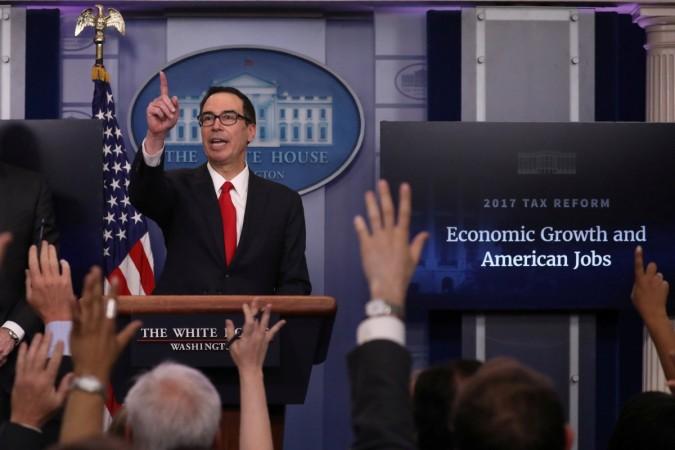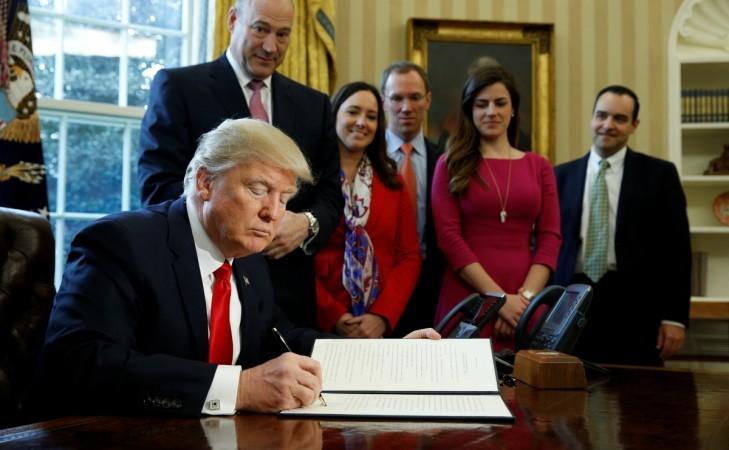
The much awaited tax announcement of Donald Trump came in on 26th April. Most of the tax cuts proposals were along expected lines. Here are some of the key highlights of the Trump tax proposals:
- The corporate tax rate will be cut from the current level of 35 percent to 15 percent. This is likely to give a major boost to US corporates.
- The number of slabs for individual taxes has been reduced from 7 levels to just 3 levels. This will reduce the overall tax burden for taxpayers by around 5%
- The standard deduction, which is available to tax payers, will be doubled leading to a substantial increase in disposable income.
- The alternate minimum tax (AMT) that is payable by US companies on their book profits is being abolished
- The capital gains tax which was imposed by the Obama government to finance Obamacare has been scrapped I totality
- All exemptions, except the exemption pertaining to mortgages, will be done away with simplifying the entire tax structure
- Special vehicles like LLPs and hedge funds will pay reduced tax rate of 15% as against 39.5% that they are paying currently.
Overall, the tax breaks offered by Trump will result in the budget deficit shooting up by $7.2 trillion. However, the withdrawal of exemptions will result in a benefit of approximately $2 trillion resulting in a net impact on budget deficit of $5.2 trillion.

What will be the economic impact of these tax measures of the Trump government?
- The sharp cuts in individual tax rates combined with the increase in the level of standard deduction will substantially increase the disposable income with the people. This will trigger a major consumption boom in the economy resulting in greater spending and greater velocity of circulation. This virtuous cycle of spending and consumption will provide the much needed boost to demand and inflation in the US economy.
- The bigger story from the US economy standpoint will be the corporate tax cuts. While there will be a cost for the US government, it will certainly translate into a greater investment push by US corporates. Trump will be looking at part of this money to be used for financing his grand plan to invest $1 trillion into infrastructure. The multiplier impact for the US as well as for other countries will be quite large.
- The Trump tax plan will have a salutary impact on the demand and price of ferrous and non-ferrous metals. US accounts for 7% of steel consumption but 70 percent of the steel consumption goes towards construction. Higher disposable income with individuals and corporates will mean greater investments in the capital cycle triggering demand for steel. The big infrastructure push will also prop up the demand and price of steel and steel products. On the non-ferrous side, the revival in industrial activity will spur the demand for metals like aluminium, zinc and copper.
- Oil and gold will be a slightly different ball game. It is part of Trump's grand plan to bring substantial larger areas under shale oil prospecting. That will expand the supply of oil and keep oil prices depressed. Gold normally has a negative correlation with growth as well as with the dollar value. The big growth push by Trump is likely to lead to US growth getting closer to the 3 percent mark. That will give a boost to equities, which normally happens at the expense of gold prices.
Does the tax plan have larger implications for India?
The tax plan could have a series of direct and indirect implications for India. A few key implications could be as under:
- The boom in corporate spending could result in a spurt in IT spending by US companies. Of course, a large chunk will still go towards digital but that is where Indian IT needs to position itself. While the H1-B worries will still remain, a larger business opportunity will always be welcome.
- Many Indian companies have already established their presence in the construction business globally. A spurt in construction activity in the US will open a new window opportunity for Indian companies to also bid for such projects. As of now that is still a vast untapped opportunity and will expand our engagement with the US beyond IT, pharma and auto ancillaries.
- The consumption boom triggered by the spurt in incomes and purchasing power will create demand for a variety of Indian products with export potential. A turnaround in demand in the US could actually be the much needed trigger for Indian companies to give a direct and an indirect boost to their top-lines.
- Lower taxes and a more conducive business environment in the US will be favourable for Indian companies looking to expand their footprint in the US. This will also expand the nature of FDI and FPI flows from the US and Indian markets are likely to benefit from the same.
It may be too premature to judge if there could be tangible benefits for India from the Trump tax plan, but the potential is surely there. Above all, if there is a consumption boom in the US, then India is likely to join the party!


















